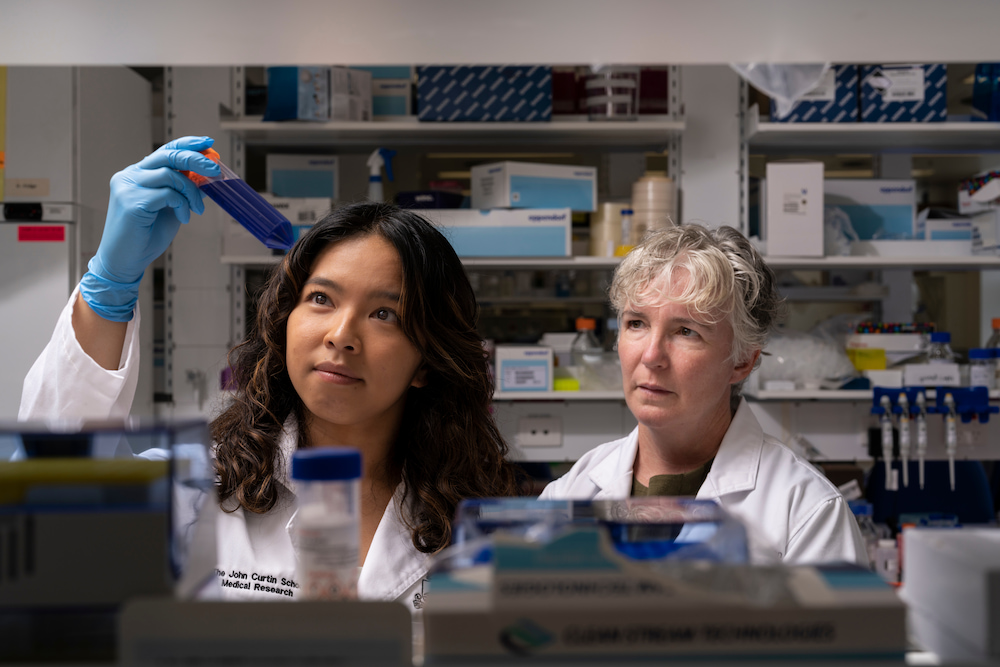Half a million Australians suffer from psoriasis, a chronic inflammatory skin disease that causes red, scaly, and itchy patches across the body. One-third of those develop psoriatic arthritis, leaving them with joint pain, stiffness, and swelling. Although the condition is caused by an autoimmune disease – the immune system wrongly perceiving healthy cells as a threat and attacking them – it carries social, as well as physical, stigma.
“So many people are accused of having poor hygiene due to the plaques or even just minor skin lesions as they erupt,” says Rebecca Davey, CEO of Arthritis ACT, who has both psoriasis and psoriatic arthritis. “It’s not the individual’s fault that their skin is in the condition it’s in; psoriasis is a painful, debilitating condition.”
Now, scientists from the Australian National University say they have discovered the gene mutation that causes psoriasis, and why it progresses from a skin disease to the joints.
If two copies of the mutated gene IKBKB are present, patients with psoriasis may develop psoriatic arthritis, Dr Chelisa Cardinez, a researcher at ANU’s John Curtin School of Medical Research, said.
“Using a mouse model, we identified that this mutation led to an abnormal function in a group of immune cells known as regulatory T cells,” Dr Cardinez said.
“These cells are normally considered gatekeepers of the immune system. However, we found that this mutation alters the function of these cells, causing them to contribute to inflammation and promote the onset of disease.”
Dr Cardinez hopes the findings will improve diagnosis and treatment for patients.
“Studies have shown that delays in psoriatic arthritis diagnosis is linked to worse clinical outcomes for patients. Therefore, earlier detection and treatment of these immune diseases is key to improving health outcomes.
“By developing a better understanding of the IKBKB gene and the rôle it plays in promoting the onset of these diseases, it could bring us a step closer to one day finding a cure, which would offer new hope for hundreds of thousands of Australians.”
There is currently no cure for the condition, although treatments can help manage the condition. Last year, the Pharmaceutical Benefits Scheme (PBS) listed a new, subsidised drug for Australians living with severe psoriasis.
A cure would be a relief to people like Rebecca Davey; the stiffness and pain she feels when she gets out of bed in the morning can be extreme, she says.
“People don’t understand the debilitating effects these conditions can have on the individual, and, in fact, a whole family, when someone is in constant pain, has poor sleep from pain, and feels constantly fatigued,” Ms Davey said.
“My psoriatic arthritis drugs have largely reduced the larger outbreaks on my skin, but you do have to consider everything you put on your skin and the fabrics you wear. As a former nurse, even the constant hand-washing that was required for work would cause my skin to flare up. It’s one of the reasons why I no longer work in the hospital system.”
Psoriasis must be better understood in the community, Ms Davey believes.
“I had no idea what was causing my hands to flare up all the time. Our poor GPs often don’t recognise these conditions early.
“In regional and rural areas, there is a drastic shortage of specialists both in dermatology and rheumatology to diagnose and treat these conditions, and people can wait over a year for an appointment if their symptoms are less dramatic.
“We must raise greater awareness of invisible disabilities such as those created by these conditions. A person might look OK from the outside, but in reality, they are struggling on a daily basis.”
The research is published in Nature Communications.


